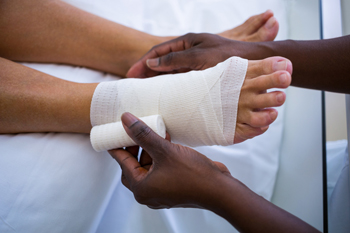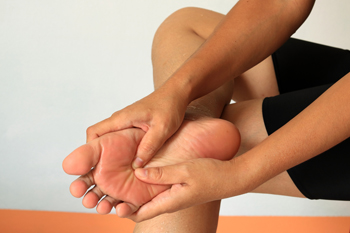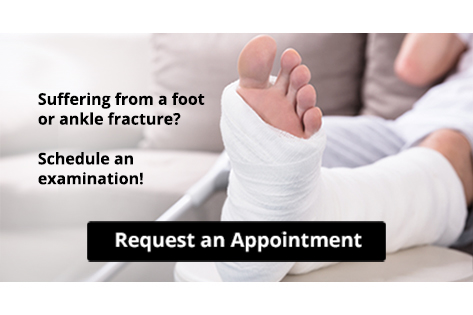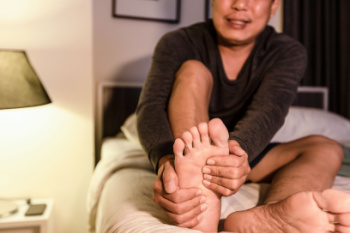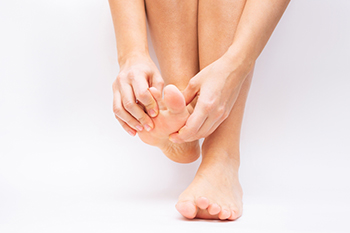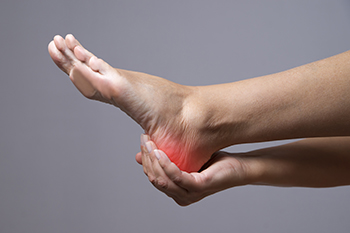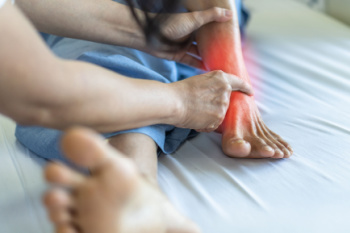 Tarsal tunnel syndrome is a condition that occurs when the tibial nerve, which runs through the inside of the ankle, becomes compressed. This compression can lead to a range of symptoms, commonly including a tingling sensation, numbness, or a burning pain in the foot, especially in the sole or arch. Some people may also experience these sensations extending to the heel, toes, or up into the calf. The discomfort often worsens with activity and can become more pronounced at night. Tarsal tunnel syndrome can be caused by anything that increases pressure in the tarsal tunnel, such as swelling from an injury, flat feet that strain the nerve, or growths like cysts. If you suspect tarsal tunnel syndrome, it is suggested that you seek prompt evaluation from a podiatrist.
Tarsal tunnel syndrome is a condition that occurs when the tibial nerve, which runs through the inside of the ankle, becomes compressed. This compression can lead to a range of symptoms, commonly including a tingling sensation, numbness, or a burning pain in the foot, especially in the sole or arch. Some people may also experience these sensations extending to the heel, toes, or up into the calf. The discomfort often worsens with activity and can become more pronounced at night. Tarsal tunnel syndrome can be caused by anything that increases pressure in the tarsal tunnel, such as swelling from an injury, flat feet that strain the nerve, or growths like cysts. If you suspect tarsal tunnel syndrome, it is suggested that you seek prompt evaluation from a podiatrist.
Tarsal tunnel syndrome can be very uncomfortable to live with. If you are experiencing tarsal tunnel syndrome, contact Vincent, Vess of Fourth River Foot & Ankle. Our doctor can provide the care you need to keep you pain-free and on your feet.
Tarsal Tunnel Syndrome
Tarsal tunnel syndrome, which can also be called tibial nerve dysfunction, is an uncommon condition of misfiring peripheral nerves in the foot. The tibial nerve is the peripheral nerve in the leg responsible for sensation and movement of the foot and calf muscles. In tarsal tunnel syndrome, the tibial nerve is damaged, causing problems with movement and feeling in the foot of the affected leg.
Common Cause of Tarsal Tunnel Syndrome
- Involves pressure or an injury, direct pressure on the tibial nerve for an extended period of time, sometimes caused by other body structures close by or near the knee.
- Diseases that damage nerves, including diabetes, may cause tarsal tunnel syndrome.
- At times, tarsal tunnel syndrome can appear without an obvious cause in some cases.
The Effects of Tarsal Tunnel Syndrome
- Different sensations, an afflicted person may experience pain, tingling, burning or other unusual sensations in the foot of the affected leg.
- The foot muscles, toes and ankle become weaker, and curling your toes or flexing your foot can become difficult.
- If condition worsens, infections and ulcers may develop on the foot that is experiencing the syndrome.
A physical exam of the leg can help identify the presence of tarsal tunnel syndrome. Medical tests, such as a nerve biopsy, are also used to diagnose the condition. Patients may receive physical therapy and prescriptive medication. In extreme cases, some may require surgery.
If you have any questions please feel free to contact our offices located in Pittsburgh, White Oak, and McKeesport,PA . We offer the newest diagnostic and treatment technologies for all your foot and ankle needs.
